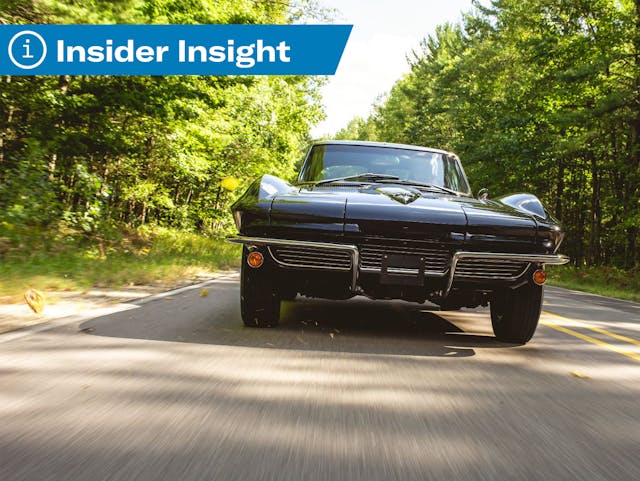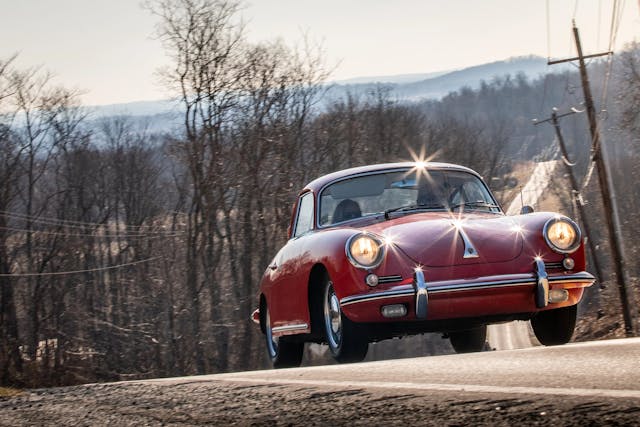Media | Articles
These 4 iconic classics just aren’t attracting young buyers

Want a better understanding of what’s driving collector-car values? Sign up for the Hagerty Insider newsletter.
If you’re a regular reader, you’ve probably noted that we frequently reference demographic data—in particular, age. That’s due to both supply and demand. We have a surfeit of information on enthusiasts’ ages courtesy of Hagerty’s insurance call centers (“how old are you” is one of the standard questions an agent will ask in order to give you a quote on insurance). And we know, from comments on Hagerty media articles and chatter at practically every car event, that many enthusiasts worry whether the next generations will keep our hobby going.
Generally, the story is an encouraging one. Our data show younger enthusiasts are increasingly interested in collector vehicles and in particular tend to appreciate the very same vehicles their parents and grandparents loved.
Of course, this interest is fortunate for the hobby—if every enthusiast sought out solely the new cars of their youth, tens of thousands of Ford Model Ts and Model As (along with countless other models) wouldn’t still be on the road.
This phenomenon doesn’t extend to every classic car, however. Based on our policy quote data, some vehicles face flagging interest among younger collectors—and we’re not just talking about fringe models, either.
Marketplace
Buy and sell classics with confidence
Before diving in, we should remind you that age is just one of several factors that enable us to accurately track collector marque and model trajectories. Breaking down enthusiasts by generation admittedly lumps together a broad swath of automotive interests—a Gen-Xer born in California in 1965 may well have different collector influences and priorities than one born in Idaho in 1979, for example. That said, parsing interest in vehicles by collector age group has proven to be an effective indicator of the potential future health of that vehicle’s valuation.
1961–74 Jaguar E-Type (series I, II and III)

For all three series of E-Types, a full 80 percent of quotes are from enthusiasts born before 1965.
Cost likely has something to do with that—older enthusiasts still tend to dominate interest in more expensive vehicles, and the series I (1961–7) E-Type, the most popular model, is reliably a six-figure car, per both the Hagerty Price Guide and the values callers assign to their cars when they call us ($148K, on average). Yet the series II (1968–71) and the V-12-powered series III (1971–4) tend to be more attainable and still get relatively little interest from younger collectors.
1948–65 Porsche 356

Porsche as a whole is one of the healthiest brands in terms of its appeal to enthusiasts of all ages, thanks largely to the longevity and timeless appeal of the 911. Yet that doesn’t seem to extend to the car that started it all, the 356.
Nearly 70 percent of the people calling us about insurance on one are born in 1965 or earlier. As with the E-Type, cost might be a factor. The earliest 356s (those built between 1949 and 1955, or “pre-A” in Porsche-speak) can hit seven figures, and even the later models (1963–5 356C) tend to be worth more than $100K. Yet no one would call the 964-era 911 Turbo an affordable car these days, and Gen-X and younger generations reliably make up close to fifty percent of interest in them.
1946–55 MG T-series

The MG aids in demonstrating that interest (or lack thereof) in a car is not simply a function of price. The MG series helped popularize the sports car in the United States after World War II and has always been an affordable gateway to the joys of open-air backroads driving. The 1950–3 TD, the most popular of the T-series MGs, can be had in good condition for around $20K. And yet 88 percent of quotes for these MGs are from enthusiasts born before 1965.
There are a number of factors here, including the fact that MG hasn’t sold a car in the United States since 1980. Yet the most salient reason for the MG’s lack of popularity among younger enthusiasts is probably the Mazda Miata, which is even less expensive (for now), considerably newer, and has the 1990s vibes that Millennials in particular seem to dig.
1963–7 Chevrolet Corvette

You might expect Corvettes to dominate this list but, for the most part, you’d be wrong. Late third-generation (or C3, 1974–1982) and fourth-gen cars (C4, 1984–1996) tend to be quite popular among younger collectors.
Yet for the 1963–7 C2, interest is indeed graying: Some 74 percent of people calling us about them were alive when the car came out. These cars aren’t MG-cheap, but, leaving aside early split-window cars and ultra-rare variants, neither are they E-Type expensive. People calling us for a quote on a C2 state an average value of $83K, about sixty grand less than for early E-Types.
The outlook isn’t the same for all American cars of this era. The 1961–9 Lincoln Continental (29 percent of quotes come from those born prior to 1965), 1960s Chevrolet Impalas (36 percent), the 1965–8 Ford Mustang (41 percent), and 1949–67 Volkswagen Beetle (36 percent) all have a majority of quotes from Gen-X and younger enthusiasts.
What’s to come?
What are the potential implications for those vehicles that don’t have much youth appeal? In the short term, we don’t see much risk. People from the baby boomer or earlier generations still control nearly 65 percent of the wealth in the United States and are extremely active in the collector car market.
If these trends continue over the long term, however, affected vehicles may see diminishing demand and values that don’t keep up with inflation or decline.
That won’t shake any of those cars from the firmaments of classic-car legend, and it won’t make them any less fun on your favorite road. Just the same, it never hurts to head out to local events, let the kiddos sit in the car, and take them for a spin.
***
Check out the Hagerty Media homepage so you don’t miss a single story, or better yet, bookmark it. To get our best stories delivered right to your inbox, subscribe to our newsletters.
Via Hagerty Insider






Nearly if not all of the comments here suggest one important topic. That of course is economics. Trying to understand this question is therefore that simple. Younger people are not nearly financially as their older generation counterparts. There are actually 3 reasons to state this properly: economics, economics, and oh yeah economics. This article tells me some the writers for Haggerty have just run out of ideas for new topics. I know it’s hard to come up with new and interesting topics much of the time.
I don’t think it is about power or drivability, I think it is more about image and social behavior. All of these cars have one thing in common – they look really old, not just old like a 50-60s muscle car, but really old. I happen to like ALL of these cars, but my favorite cars in the world are Desenbergs and Auburns. When I see the Jag E or the MG T I think Old sophistication, like some European Aristocrat, smart and wealthy driving around with his mistress or a girl on each arm. When people under 30 see these cars they think negative old impressions like racism and male dominance. Millennials are very similar to the hippies of the 60s they rebel against old establishment feelings (even when the old establishment is wealth and sophistication like a jag or old rebels like animal house vettes). In other words when I was in my late 20s in the late 90s the guy in a classic vette or jag E was super cool to me and I wanted to be like him. BUT when a 25 year old today sees me in an old jag or MG-T they think I am an outdated racist, entitled male that doesn’t support women or fluid genders
I dig all the cars listed above and have for a very long time (I’m 38 now). While entertaining, some of these articles recently pertaining to age and demographics seem to not emphasize the cost factor. The MG is the lowest priced car listed (generally speaking) but the are not terribly practical and probably the least known to younger enthusiasts. I can just see an article explaining that young people just don’t like Duesenbergs. Hopefully these insights bear out on the marketplace and I’ll be able to buy a Model J soon.